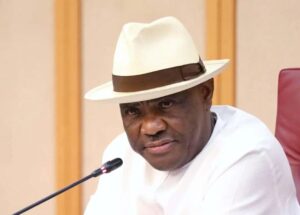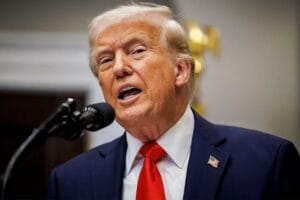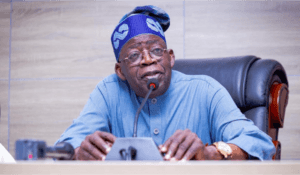Historical State Systems in Nigeria
The contemporary Nigeria formation reflects a complex history, characterized by various political and social systems such as empires, caliphates, kingdoms, chiefdoms, city-states, and village republics. These communities had long-standing traditions before the advent of colonial influence. Over time, however, Nigeria evolved into a diverse state, deeply divided by ethnic, religious, and regional identities, leading to intense and sometimes violent political contests.
European Scramble for Africa and Nigeria’s Colonial Transition
During the European scramble for Africa, countries like Germany, France, and Britain competed for control of African territories. Nigeria eventually became a British colony, where diverse ethnic and linguistic groups were consolidated under one political unit. The major groups—Hausa-Fulani (primarily Muslim), Igbo (predominantly Christian), and Yoruba (religiously mixed)—make up a significant portion of the Nigerian population, with many smaller ethnic groups spread across the country.
The Influence of British Rule
British Incursion and Consolidation of Power
The British incursion into Nigeria began in the 1840s. By 1914, the British combined the Northern and Southern regions of Nigeria for administrative convenience, pooling resources from the wealthier South to support the North. This amalgamation was largely criticized by Nigerians who felt ignored in the decision-making process. The British left a legacy of division by failing to unify the country under a single political identity, leading to deep-rooted ethnic rivalries.
Introduction of Indirect Rule
The British established an indirect rule system, particularly in the North, where the existing structure allowed emirs to govern under British supervision. In contrast, the western region’s rulers, such as the obas, were recognized but remained subordinate to colonial officials. The eastern region, with smaller political units, was divided into districts, each governed by British officers. This colonial system fostered regional tensions and disrupted traditional governance.
Nigerian Nationalism and Independence Struggles
Regional Leaders and Ethnic Differences
In the quest for independence, regional leaders like Nnamdi Azikiwe, Obafemi Awolowo, and Ahmadu Bello held distinct views on Nigeria’s future. These differing perspectives reflected the diverse ethnic landscape, complicating the unification process. The South was eager for self-rule, while the North initially opposed it, leading to delays in independence.
Emergence of Political Parties
The main political parties—National Council of Nigerian Citizens (NCNC), Action Group (AG), and Northern People’s Congress (NPC)—grew from ethnic roots, further entrenching regional loyalties. This period introduced “carpet crossing,” a practice of switching political allegiance, and various constitutional developments that laid the foundation for federalism in Nigeria.
Path to Independence
After the 1958 constitutional conference, the call for independence grew stronger, and in 1960, Nigeria achieved independence. However, the post-independence government was fragile, inheriting a disjointed federation, heightened ethnic consciousness, and limited political experience.
Post-Independence Challenges
Political Crises of the First Republic
From 1960 to 1966, Nigeria faced numerous crises, including the census controversy, the Action Group crisis, and election-related conflicts. The use of state institutions against political opponents fueled instability, leading to military intervention and ultimately a civil war.
Military Intervention and Coup of 1966
The Nigerian military, traditionally apolitical, intervened on January 15, 1966, overthrowing the government led by Alhaji Abubakar Tafawa Balewa. Led by Major Chukwuma Kaduna Nzeogwu, the coup aimed to eliminate corruption and disunity. However, the ethnic composition of the coup leaders and victims fueled suspicions, prompting further coups and escalations.
The Nigerian Civil War
Causes of the Civil War
The January 1966 coup intensified ethnic tensions, leading to massacres of Igbos in the North. In response, Lt. Colonel Emeka Ojukwu, Military Governor of the Eastern Region, pushed for Igbo independence, declaring the Republic of Biafra on May 30, 1967, after failed peace efforts. This act of secession sparked the Nigerian Civil War, lasting from 1967 to 1970.
Legacy of the Civil War
The Nigerian Civil War left lasting impacts on the country’s unity and political structure. The war shaped Nigeria’s identity, influenced subsequent governance, and highlighted the ongoing challenges of managing its ethnic and regional diversity.
Nigeria’s Political Evolution and Federal System
Nigeria’s Shift from Parliamentary to Presidential System
After Nigeria gained independence, it initially followed a parliamentary system, where there was a separation between the head of state and head of government. However, tensions rose between key leaders like Prime Minister Abubakar Tafawa Balewa and Governor-General Nnamdi Azikiwe during the 1964 election. In 1979, Nigeria adopted the presidential system, granting executive powers to the president, similar to the United States model.
Key Features of the 1979 Constitution
The 1979 Constitution introduced:
- Direct presidential elections by popular vote.
- Executive powers to the president.
- Two four-year terms for the president.
The Role of Federalism in Nigeria
Understanding Federalism
Federalism is a system where power is divided between central and regional governments. It encourages unity within diversity, allowing each region to operate independently within defined areas.
Nigeria’s Journey in Federalism
Nigeria adopted federalism in 1954, initially with three regions. Over time, additional states were created to accommodate minority groups:
- 1967: Increased to 12 states.
- 1976: Increased to 19 states.
- 1994: Introduction of six geo-political zones for regional balance.
Today, Nigeria has a three-tier federal system with a federal government, 36 states, and 774 local government areas.
Power Sharing and Zoning Formula
The Zoning Principle
The zoning formula in Nigeria ensures fair power distribution among Nigeria’s diverse regions. The Peoples Democratic Party (PDP), since 1999, has upheld this principle by sharing key political positions among six geo-political zones.
Issues of Federal Overreach
Despite federalism, there are concerns over over-centralization. The federal government often assumes roles meant for states or local governments, limiting their autonomy.
Local Government Reforms and Challenges
The 1976 Local Government Reform
The 1976 reforms by the Murtala/Obasanjo administration aimed to empower local governments as an independent third tier with defined powers. However, states often dominate local governments, restricting their autonomy.
Economic Challenges for Local Governments
Local governments face financial strain due to over-reliance on federal revenue, which accounts for over 80% of national finances.
Political Parties in Nigeria
Emergence of Political Parties
Nigeria’s first political party, the Nigerian National Democratic Party (NNDP), was founded in 1923 by Herbert Macaulay. Other parties like the National Council of Nigeria and the Cameroons (NCNC), Northern Peoples Congress (NPC), and Action Group (AG) soon followed, each with regional and ethnic affiliations.
Ethnic and Regional Influence on Parties
Early parties like the NCNC, NPC, and AG focused on specific ethnic or regional interests, influencing tribal politics in Nigeria.
The Second and Fourth Republics
In the Second Republic (1979), five major political parties emerged, mirroring the ethnic tendencies of earlier parties. Today, Nigeria’s Fourth Republic hosts numerous registered parties, with the Peoples Democratic Party (PDP) being the dominant party since 1999.
Pressure and Interest Groups in Nigeria
Role of Pressure Groups
Pressure groups advocate for citizen interests and influence government policies. Key groups include the Nigerian Labour Congress (NLC), Nigerian Bar Association (NBA), and the Academic Staff Union of Universities (ASUU).
Ethnic Movements as Pressure Groups
Ethnic-based groups, like Ohanaeze Ndigbo and the Arewa Consultative Forum, promote the interests of their respective communities, often in response to resource allocation issues.
Constitutional Developments in Nigeria
Introduction to Constitution-Making in Nigeria
The process of constitution-making in Nigeria began with the amalgamation of the northern and southern protectorates in 1914. This merger was facilitated by three constitutional instruments created by the colonial office in London, collectively forming what is known as Nigeria’s first constitution. Sir Frederick Lugard spearheaded this constitution, establishing the Nigerian Council—a 36-member advisory body. This council played a consultative role rather than a legislative one.
Key Developments in Early Nigerian Constitutions
Clifford Constitution of 1922
The Clifford Constitution introduced the establishment of both a legislative and executive council. This legislative council included 46 members, with a blend of official and unofficial representatives. Although the executive council provided advice to the Governor, it was not mandatory for the Governor to act on it.
Richards Constitution of 1946
In response to increasing nationalist demands, the Richards Constitution of 1946 restructured Nigeria into three administrative regions, each with a regional House of Assembly. These regional assemblies, located in Enugu, Kaduna, and Ibadan, could discuss legislation and control their regional budgets.
Move Towards Federalism: Macpherson Constitution of 1951
The Macpherson Constitution marked a move toward regionalism, with the regions evolving into political entities with executive and legislative powers. However, ethnic tensions and regional crises led to its eventual breakdown. This constitutional crisis led to the establishment of the Oliver Lyttleton Constitution in 1954.
Oliver Lyttleton Constitution and Nigeria’s Federal Structure
The Lyttleton Constitution of 1954 formalized Nigeria’s federalism, creating five regions: Northern, Western, Eastern, Southern Cameroon, and the federal territory of Lagos. The regions achieved self-government progressively, with the Eastern and Western regions in 1957 and the Northern region in 1959.
Post-Independence Constitutions
1960 Independent Constitution
The Independent Constitution of 1960 retained Nigeria’s federal structure, dividing powers between central and regional governments. The constitution adhered to the Westminster parliamentary model, where both the central and regional governments had bicameral legislatures.
1963 Republican Constitution
The 1963 Republican Constitution transitioned Nigeria into a republic, eliminating British oversight. The Supreme Court became Nigeria’s highest court, and Nigerian citizens owed allegiance solely to the Nigerian Republic.
Constitutions of the Military Era
1979 Constitution: Introduction of the Presidential System
The 1979 Constitution, introduced by the military government, marked the beginning of Nigeria’s Second Republic and introduced the presidential system. This constitution established a three-tier government system, adding local government as the third tier.
1989 and 1995 Constitutions
The 1989 Constitution sought to guide the planned return to civilian rule, though delays disrupted this transition. The 1995 Constitution, drafted during General Abacha’s rule, aimed to establish a democratic foundation but was never fully implemented.
The 1999 Constitution and Nigeria’s Modern Democracy
The 1999 Constitution, currently in effect, was created under General Abdulsalam Abubakar. This document reinforced Nigeria’s federal structure, dividing the country into 36 states, 774 local governments, and a Federal Capital Territory in Abuja. Many of its foundational principles reflect Nigeria’s earlier constitutional efforts.
Nigeria’s Leadership Role in Africa
Overview of Nigeria’s Influence in Africa
Nigeria is often called the “Giant of Africa” due to its leadership role across the continent. Since gaining independence, Nigeria has focused on African unity and regional leadership, despite some criticism about waning influence. With significant natural and human resources, Nigeria perceives itself as a key leader in West Africa and beyond.
Contributions to African Union and Peacekeeping
Nigeria is a prominent member of the African Union (AU) and the Economic Community of West African States (ECOWAS). The country has been actively involved in peacekeeping efforts, including missions in Liberia, Sierra Leone, Congo, Angola, and Mali. During President Obasanjo’s administration, Nigeria intervened in crises in several African nations, showcasing its commitment to African stability.
Challenges Facing Nigeria
Leadership Challenges in Nigeria
Nigeria faces numerous leadership challenges, often characterized by a lack of visionary governance. Renowned Nigerian author Chinua Achebe highlighted that Nigeria’s main issue is leadership failure. Leaders lacking in innovative ideas have negatively impacted Nigeria’s socio-economic and political development.
Corruption in Nigeria
Corruption is pervasive in Nigeria and affects all levels of society. It manifests as contract inflation, fraud, bribery, and other unethical practices across public institutions. Despite efforts to combat corruption, enforcement has been challenging due to inadequate support for anti-corruption agencies.
Security Issues in Nigeria
Insecurity is a major concern in Nigeria, driven by political instability, economic challenges, and ethnic tensions. Issues include political assassinations, kidnappings, terrorism (notably from groups like Boko Haram), and violent crime. This security crisis has discouraged foreign investment and created significant barriers to Nigeria’s
Nigeria has undergone significant constitutional and political changes since 1960, facing complex challenges along the way. From military to civilian transitions and from British colonial rule to self-governance, Nigeria’s journey reflects its pursuit of a system of government that best serves its diverse population. To ensure future progress, Nigeria must address its leadership, corruption, and security challenges—strengthening its role both within and beyond Africa.
Share this:
- Click to share on Facebook (Opens in new window) Facebook
- Click to share on X (Opens in new window) X
- Click to share on LinkedIn (Opens in new window) LinkedIn
- Click to share on Pinterest (Opens in new window) Pinterest
- Click to share on Telegram (Opens in new window) Telegram
- Click to share on WhatsApp (Opens in new window) WhatsApp





